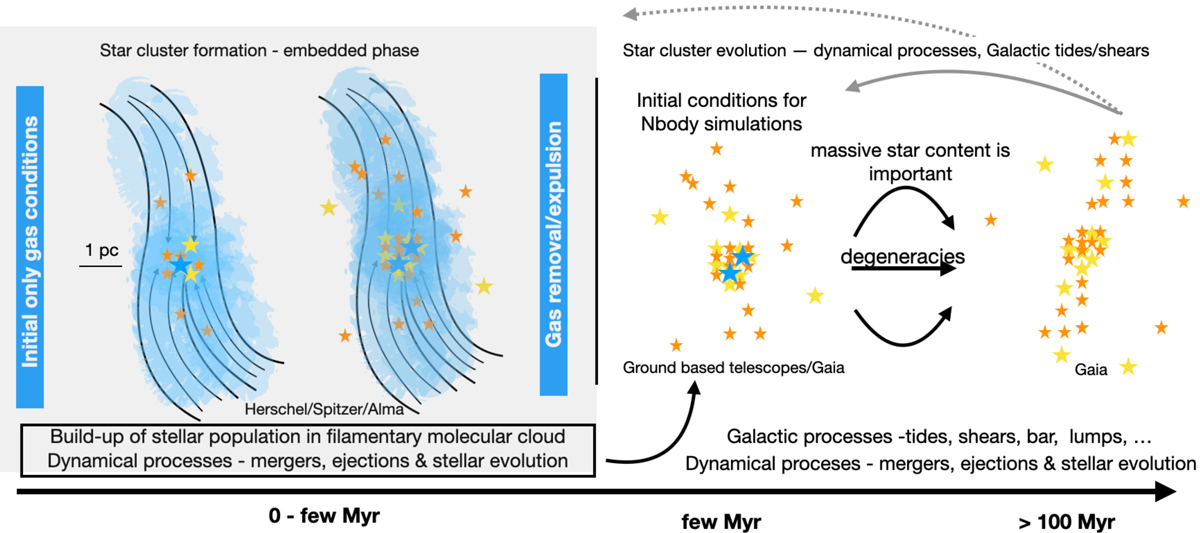Fig. 2.

Download original image
Sketch of the formation and evolution of a star cluster (from left to right). Left: gas embedded phase where star formation occurred along the filaments in a few million years, which were influenced by the large-scale gas flow, the OB feedback, and the stellar dynamics. Right: after the gas expulsion, the bound star cluster re-virialized to a roughly spherical system, which is the initial condition in our models. With the three black solid arrows, we show that there are a number of evolutionary tracks that a star cluster can take. In our case, we focus on how the content of massive stars can affect the evolution of the cluster with otherwise identical initial conditions. We show that while this causes degeneracy, making it impossible to uniquely infer the initial conditions of an observed cluster, the properties of its tidal tails help to break the degeneracy and thus constrain the initial conditions, as marked by the gray solid arrow. The ultimate question (indicated by the gray dotted arrow) then refers to what constraints can be placed on the gas-embedded phase of the star cluster.
Current usage metrics show cumulative count of Article Views (full-text article views including HTML views, PDF and ePub downloads, according to the available data) and Abstracts Views on Vision4Press platform.
Data correspond to usage on the plateform after 2015. The current usage metrics is available 48-96 hours after online publication and is updated daily on week days.
Initial download of the metrics may take a while.


